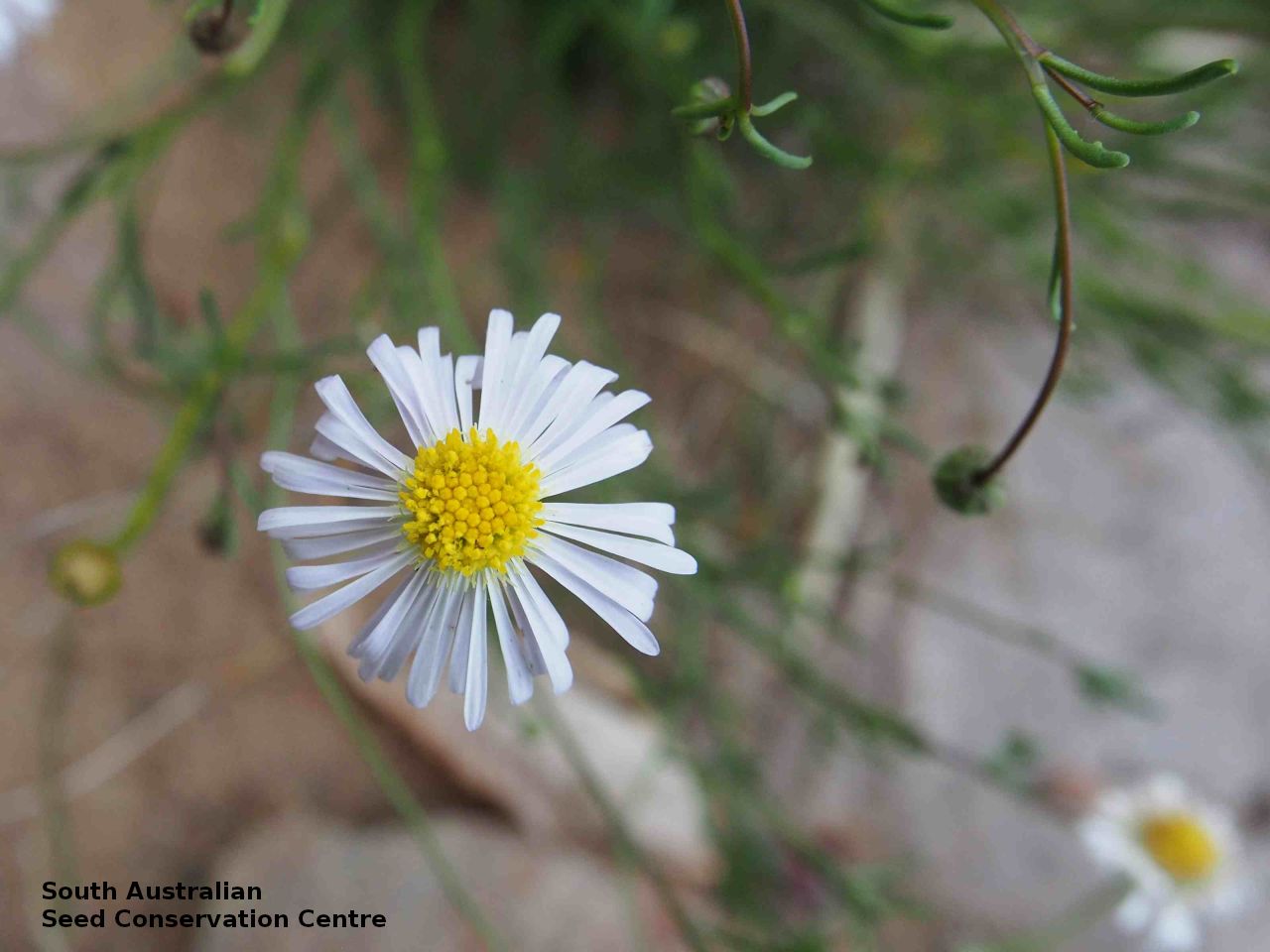























Botanical art
Prior names
Brachycome parvula
Brachycome lissocarpa
Brachycome parvula var. lissocarpa
Common names
Coast Daisy
Small Daisy
Etymology
Brachyscome from the Greek 'brachys' meaning short and 'kome' meaning hair, referring to the short bristles or hairs of the pappus. Parvula from the Latin 'parvus' meaning small, alluding to its appearance.
Distribution and status
Scattered eastward from the Mount Lofty Ranges to the lower South-east in South Australia, growing on coastal cliffs and saline, marshy ground near the sea, to inland grassland, woodland and forest. Also found in Victoria and Tasmania. Native. Rare in South Australia. Common in all the other states. This daisy is endangered in the Adelaide and Mount Lofty Ranges region where it is only known from a couple of small extant populations in the Mt Crawford area. The SA Seed Conservation Centre collected ~700 seeds in 2016 with support from AMLR NRM and has propagated a number of plants for a Seed Production Area in the Adelaide Botanic Gardens with the assistance of Marden College students.
Herbarium regions: Northern Lofty, Murray, Southern Lofty, South Eastern, Green Adelaide
NRM regions: Adelaide and Mount Lofty Ranges, South Australian Murray-Darling Basin, South East
AVH map: SA distribution map (external link)
Plant description
Annual or perennial herb to 40 cm high with erect or ascending, hairless, branching stems. Basal leaves hairless, entire and linear to narrowly oblanceolate or lobed to 7 cm long. Other leaves entire or lobed to 10 cm long, hairless or with sparse glandular hairs. Flowers are small white to lilac daisy. Flowering between September and April. Fruits are small brown daisy heads. Seeds are dark brown to black pyramid-shaped seed to 1.5 mm long and 0.5 mm wide, with a smooth surface. Seed embryo type is spatulate fully developed.
Seed collection and propagation
Collect seeds between October and January. Pick heads that are maturing, drying off, with brown seeds that dislodge easily. Place the seed-heads in a tray and leave to dry for a week. Then gently rub the heads by hand to dislodge the seeds. Use a sieve to separate the unwanted material. Store the seeds with a desiccant such as dried silica beads or dry rice, in an air tight container in a cool and dry place. Seed viability can be average. This species may have physiological dormancy that needs to be overcome for the seed to germinate. Winter and spring/autumn conditions produce high germination. However, gibberellic acid (250 mg/L) or potassium nitrate (100 mg/L) added to water agar can increase germination. After-ripening at 45oC for 1 - 2 months or at 15 - 30oC for up to 12 months can alleviate dormancy.
| Location | No. of seeds (weight grams) | Number of plants | Date collected | Collection number Collection location | Date stored | % Viability | Storage temperature |
|---|---|---|---|---|---|---|---|
| BGA MSB | 450 (0.028 g) 3,500 (0.21 g) | 9-May-2006 | DJD465 South Eastern | 1-Aug-2007 | 80% | -18°C | |
| BGA | 7,600 (0.39 g) | 8-Oct-2006 | DJD465 South Eastern | 1-Aug-2007 | 100% | +5°C, -18°C | |
| BGA | 8,100 (0.42 g) | 23-Oct-2006 | MJT6 South Eastern | 1-Aug-2007 | 50% | +5°C, -18°C | |
| BGA | 13,400 (0.7 g) | 19-Nov-2008 | TST671 South Eastern | 1-Jan-2012 | 95% | +5°C, -18°C | |
| BGA | 600 (0.04 g) | 50+ | 8-Dec-2016 | DJD3552 Southern Lofty | 1-Nov-2017 | 83% | -18°C |
| 200+ | 19-Nov-2008 | TST671 South Eastern | 1-Nov-2017 | 95% | -18°C | ||
| BGA | 3,700 (0.37 g) | 50+ | 15-Nov-2017 | JRG625 South Eastern | 30-Jun-2018 | 95% | -18°C |
| BGA | 3,000 (0.19 g) | 30+ | 14-Nov-2018 | DJD3817 Southern Lofty | 24-Apr-2019 | 85% | -18°C |
| BGA | 15,600 (1.25 g) | 50+ | 1-Dec-2017 | DJD3552 Southern Lofty | 20-Jun-2023 | 95% | -18°C, -80°C |
Number of plants: This is the number of plants from which the seeds were collected.
Collection location: The Herbarium of South Australia's region name.
% Viability: Percentage of filled healthy seeds determined by a cut test or x-ray.